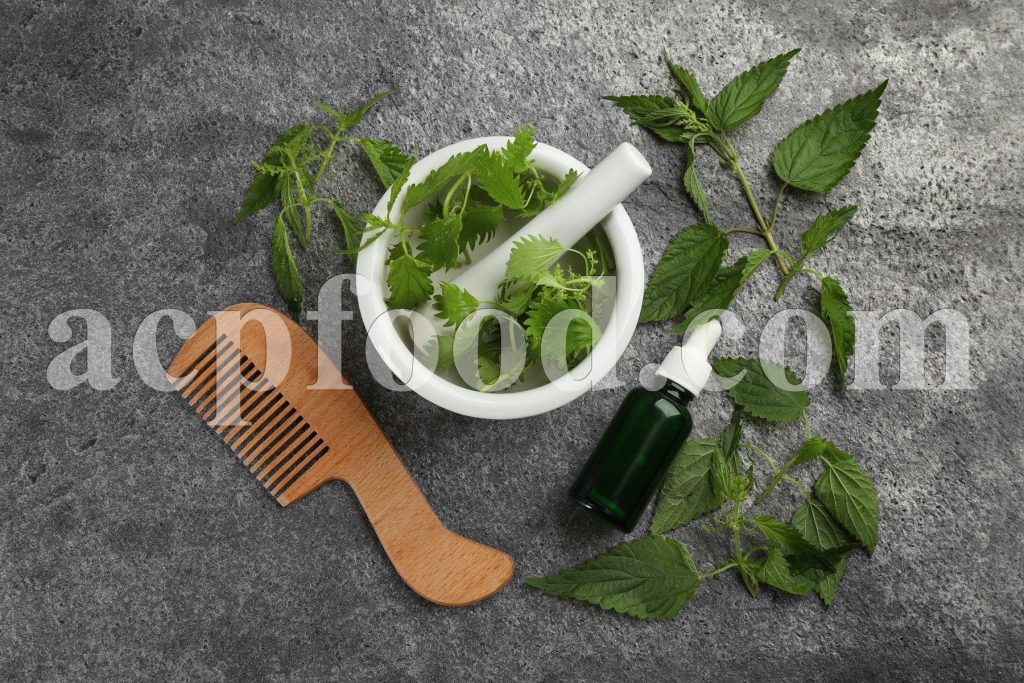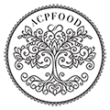Table of Contents
ToggleHair Loss Definition
In Traditional Iranian Medicine, hair loss refers to the loss of head, eyebrow, and beard hair. Hair growth in traditional medicine depends on proper digestion of food and the proper transfer of nutrients to the scalp. Therefore, in traditional medicine, any factor that disrupts any stages of food consumption, digestion, metabolism, and the transfer of food nutrients to the scalp can cause hair loss.
Hair Loss or Lack of Hair Growth Reasons
- Hair and skin malnutrition: including low quality and quantity of consumed food, internal metabolism disorders, circulation disorders, vascular problems, and skin absorption disorders.
- Abnormal changes in the skin pores: including porosity and enlarged pores, closed pores (accumulation of excessive elements in the pores), excessive dryness of the skin.
- Ulcer and inflammation on the skin
- Environmental damages
Signs and Symptoms of Different Types of Hair Loss
In traditional Iranian medicine, several symptoms and parameters are mentioned to diagnose if someone has hair loss, such as: if hair is dry or oily, hair diameter, skin circumstance in the area of hair loss, and also general symptoms such as body weakness and tiredness, general body condition, and etc.
Signs and symptoms of hair loss caused by open pores:
Soft skin and thin hair are symptoms of this type of hair loss.

Signs and symptoms of hair loss caused by lack of food and fluids intake:
Dry skin, thin hair, the presence of a background disease and weight loss are the symptoms of this type of hair loss.
Signs and symptoms of hair loss caused by closed pores due to dryness and density of skin:
Dry and thick skin, thick, curly, and black hair, hairs separate from the scalp easily by pulling. This type of hair loss usually involves dry temperaments: hot and dry (Choleric), cold and dry (Melancholic).
Signs and symptoms of hair loss caused by thick moist and phlegm:
Dry skin, thin hair and fast hair loss are symptoms of this type.
Signs and symptoms of hair loss caused by moisture dominates on the skin:
Overhydration of skin and excess moisture domination are symptoms of this type of hair loss.
Signs and symptoms of hair loss caused by intense heat:
Da al-sa’lab (Alopecia Areata): loss of hair on the head or eyebrows or the whole body that appears as circular patches baldness.
Da al-hayyeh (Lamellar Ichthyosis): the disease of hardening and malformation of the body skin, in which the surface of the skin is covered with dry scales and dark pieces similar to fish scales, and it is often congenital.

Treatment of Hair Loss in Traditional Iranian Medicine
According to the cause of hair loss, different treatments are mentioned for it:
Skin pores, including porosity and enlargement of pores:
In cases of skin pores problems with soft skin and thin hair, washing the head with Acacia, Emblic myrobalan, gallnut and also using astringent oils such as Acacia oil and Emblic oil are useful. Labdanum is also used to control this type of hair loss.
If hair loss is caused by malnutrition:
It is recommended to consume fresh and varied foods, and also easy to digest foods such as organic chicken, and wheat. Washing hair with mallow (Alcea sp.), willow leaves (Salix alba), henna leaves (Lawsonia inermis) and Malva leaves decoction is recommended. It is recommended to use oils such as violet oil and lotus oil for rubbing hair and skin. It is also useful to smell cold temperament flowers such as lotus, violet and fruits such as quince and apple.
In cases of pores blockage of the skin:
The excess moisture should be relieved and the dryness of the skin should be removed by bathing in lukewarm water and using moisturizing oils such as almond oil, chamomile oil, and jasmine oil (Jasminum officinale). Also, the consumption of Emblic myrobalan oil, Acacia oil and myrtle leaf oil (Myrtus communis) is recommended.
In cases of narrow skin pores:
It is recommended to reduce body moisture by taking a long bath and cleansing the body from the factors which have caused phlegm domination. Rubbing a thick cloth smeared with bitter almond oil and Artemisia abrotanum oil while bathing is effective. In this case, it is recommended to consume dry foods and spices such as goat meat, camel meat, fresh fish with cinnamon (Cinnamomum verum), pepper (Capsicum annuum) and cumin (Cuminum cyminum) and avoid foods that produce phlegm humor.
To treat hair loss caused by excessive skin moisture:
Washing can be effective. In all types of wounds, cleaning and reducing substances from the wound using herbs such as Malva sylvestris, Alcea officinalis can be effective.
In cases of hair loss which is developed by diseases caused by high heat such as fever:
Poultices such as Alcea officinalis, Malva sylvestris and other types of mucilaginous herbs decoction, and oils can be effective.
From the point of view of traditional Iranian medicine, blood circulation disorders and improper nutrition of hair roots and skin are one of the most important causes of hair loss. Research has also shown that nutritional deficiencies, including the lack of various micronutrients such as zinc, iron and copper and the lack of essential and non-essential amino acids, are a common problem in patients with hair loss.
Abnormal pores of the scalp are also an important factor in hair loss. Skin disorders including sebaceous gland dysfunction and desquamated skin can cause hair loss.
Determination of temperament and paying attention to its importance in the occurrence or exacerbation of hair loss is one of the important factors in the treatment of hair loss in traditional medicine.
In traditional medicine, paying attention to the role of food is a fundamental matter in the treatment of diseases. Therefore, modifying the patient lifestyle and diet is considered the first intervention to treat various diseases. In many cases, the correct consumption of food is more important than the use of medicine.
Recommendations of Traditional Iranian Medicine for Hair Loss
If hair, beard, or eyebrows fall out, rub the area with a rough cloth to get red, then rub it hard with an onion so that the patient feels burning and redness in that area. Leave it for a day and night and use this method again the next day.
If it blisters, clean it with chicken fat and stop rubbing for a few days until the blisters heal. If hair start growing in that area, shave it and rub it with a cloth which is smeared to the following oil every day: Cook Achillea millefolium, Adiantum capillus-veneris and Chamomile (Matricaria chamomilla) 26 grams of each with water until they are mashed. Then filter its water and mix 311 grams of it with 311 grams of oil and cook slowly again until its water reduces, then use the obtained ointment.

If the patient continues to eat phlegm-producing foods, the skin of the area where the hair has fallen will turn completely white. Use the following tablets for treatment:
Turpeth (Ipomoea turpethum) 32 grams, Eiarej fiqra (Terebinth, saffron, Commiphora opobalsamum seeds, valerian root, Eugenia caryophyllata, Asarum europaeum, Cinnamomum cassia Blume, pepper (Piper longum), cinnamon (Cinnamomum verum), Commiphora opobalsamum wood, of each 6.4 grams, Aloe barbadensis to the total amount of spices, mix it all together) 32 grams, Citrullus colocynthis 10 grams, mix all and eat 6-10 grams of it every week for 4 weeks.
A poultice for hair growth:
Cuttlebone extract 32 grams, borax, Brassica alba, sulfur, Cassia angustifolia and Euphorbia resinifera 6.4 grams each and Loranthus europaeus and Cantharis vesicatoria 3.2 grams each, cook and rub with old olive oil after rubbing with onion, and if the skin blister, leave the treatment for a few days, then treat it with duck fat until it calms down. If necessary, do the same treatment again.
Hair growth in desired area:
If the growth of beard and eyebrows is slow, make a paste of cuttlebone extract and Achillea millefolium with old olive oil. First rub the area with this ointment and apply this paste on it every night and drink pure wine.
Hair wash:
- Take fresh leaves of Azadirachta indica and Maidenhair Fern(Adiantum capillus-veneris) and Commiphora myrrha and Phyllanthus emblica, grind them and mix them with honey. After wetting the head with Phyllanthus emblica, cover the head with it.
- Take the water in which the beetroots were cooked, add a little Brassica alba to it and wash your hair with it, then apply Myrtus communis oil, it makes hair grow faster.
For preventing hair loss:
- Constantly rub the hair with Myrtus communis oil.
- Take Phyllanthus emblica and Myrtus communis leaves and cook with water until the water turns red, cook 311 grams of unripe olive oil and 311 grams of Phyllanthus emblica and Myrtus communis water until the water decreases, then mix it with 26 grams of Cistus ladaniferus and add wine to it and rub the hair roots with it.
- Cook Papaver rhoeas flower, Myrtus communis leaf, Adiantum capillus-veneris, valerian, Cyperus longus, beet seed (Beta vulgaris), celery (Apuim graveolens) and Phyllanthus emblica, one handful in 311 grams of water until its water decreases and pour 13 grams of Acacia nilutica extract and the same weight Pinus pinea bark ash. Apply this oil on the scalp every day strengthens and darkens the hair.
- Mix Adiantum capillus-veneris, Myrtus communis leaves, Pinus pinea and Boswellia carterii bark in equal amounts and cook until crushed, then add Cistus ladaniferus and Commiphora myrrha one part each and mix with old wine and Raphanus sp. Mix all and apply on the head at night and wash it during the day and do this continuously will eliminate hair loss if it is at early stage.
- Boswellia carterii, Aleppo Oak (gallnut) 3.2 grams each, mastic 4.8 grams, Lagoecia cuminoides and Commiphora myrrha 6.4 grams each, Cistus ladaniferus 9.6 grams, dissolve in rose oil and apply to the roots of hair.
- Mix Euphorbia resinifera, Brassica alba, Laurus nobilis fruits, 19.2 grams each, sulfur and Helleborus albus 6.4 grams each, mix with olive oil and apply to the scalp.
A poultice which is useful for phlegmatic hair loss:
Veratrum album, Helleborus niger, Euphorbia resinifera, Ruta graveolens, mix all in equal quantity and apply with yellow wax and Croton tiglium oil.
A poultice which is useful for choleric hair loss:
Burnt Cuttlebone, tar (Tar), mouse dung, Lepidium sativum, Anacyclus pyrethrum, Artemisia herba-alba, all mixed in equal amount and mixed with olive oil and apply.
References
1- Gorji, Narjes, et al. “An Approach to Hair Loss and its Management in Persian Medicine.” Traditional and Integrative Medicine (2018): 127-137.
2- Al-Mansoori fi al-teb (translation), p.: 284.
3- Al-Mansoori fi al-teb (translation), p.: 283.
4- Al-Mansoori fi al-teb (translation), p.: 285.
5- Elixir Azam, vol. 4, p. 528.
6- Qarabadin Kabir, vol. 2, p. 1088.

